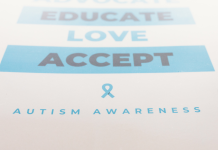 In the early years of parenting, whether we’re aware of it or not, many of us are living in survival mode. Pleasure, expansiveness, joy, and sensuality generally aren’t at the top of our priorities when we’re slogging through sleepless nights and trying to keep ourselves and our family afloat. I think this is where many women tend to lose themselves.
In the early years of parenting, whether we’re aware of it or not, many of us are living in survival mode. Pleasure, expansiveness, joy, and sensuality generally aren’t at the top of our priorities when we’re slogging through sleepless nights and trying to keep ourselves and our family afloat. I think this is where many women tend to lose themselves.
Motherhood shapes your identity in every way possible.
Each birth not only brings a whole new baby into this world but a different version of yourself, as well. And as the responsibilities pile up, time for yourself becomes sparse. Connecting with your sensuality may become more of a challenge.
In fact, maybe you see it more like a chore. Perhaps there’s even deep-seated fear or worry about how to experience pleasure or sensuality again, after all your body has been (and continues to go) through. This can be especially true for women who have experienced birth trauma, trauma during pregnancy, or who have a history of trauma and stress-related disorders.
When we’re in survival mode, our bodies are simply not focused on pleasure. Pleasure involves some level of safety and trust, as well as the ability to let ourselves be with it. It takes time to increase your capacity to be with pleasure, especially if you’ve been in survival mode for quite a while. So tip number one is to give yourself grace and compassion, and not rush the process.
Let’s also uncouple the idea that sensuality must mean sexuality.
The pressure to be sexual too early into your motherhood journey can add even more stress to your nervous system and ultimately make you feel worse if your body/mind is not yet ready to go there.
Sensuality can simply be all that is pleasing or fulfilling to the senses.
Let life dazzle you through your senses! Take a moment to truly enjoy that first sip of your morning coffee. Pause and allow yourself to be with the sensation of the warm sun on your skin. Notice the colors of the sunrise as they break over the horizon.
Slow down and really be present with these moments. With a special emphasis on noticing what happens internally as you connect with your senses in this way.
Do you notice a warmth radiating from your heart? Is there a feeling of expansion somewhere in your body? Maybe you notice tingling, melting, a lightness, or a sense of calm come over you?
To begin connecting with your sensuality again, get curious about how your body experiences moments of pleasure and joy, even when it’s not in a sexual context.
If you’re open to it, I invite you to experiment with this exercise as a way to help begin building your capacity for pleasure.
In bed or sitting on a comfortable chair or couch, start with holding a pillow over your stomach.
Notice what parts of you can soften and enjoy the way the pillow feels. If you’d like, rub the pillow and physically notice what parts of your hand, palm, and wrist can sense the texture of the pillow.
Now, bring to mind something you deem pleasurable.
You can experiment with non-sexual pleasure first, like enjoying your favorite ice cream, if that feels like where you’d rather start. If you do feel ready to explore sexual pleasure, you are welcome to do so.
Notice as you do, what parts of your body can feel the pleasure. Next, observe what places are bracing or constricting against pleasure. What thoughts, beliefs, or expectations are pulling you away from pleasure? (“I haven’t earned it.” “What would others think of me?” “It’s/”I’m too much.”)
Now, locate how you experience the pleasure. You might like to investigate putting your hands on your body, anchoring into whatever sensation is there. Consider what you need to deepen this. More stretching? More touch? Music? You are now stretching the capacity for these parts to feel pleasure.
You’re a mother because you’re a human first who came into this world to experience joy. Why not let yourself?
DISCLAIMER: The information provided is not a substitute for professional medical advice or treatment for specific medical conditions. You should not use this information to diagnose or treat a health problem without consulting a qualified healthcare provider.










